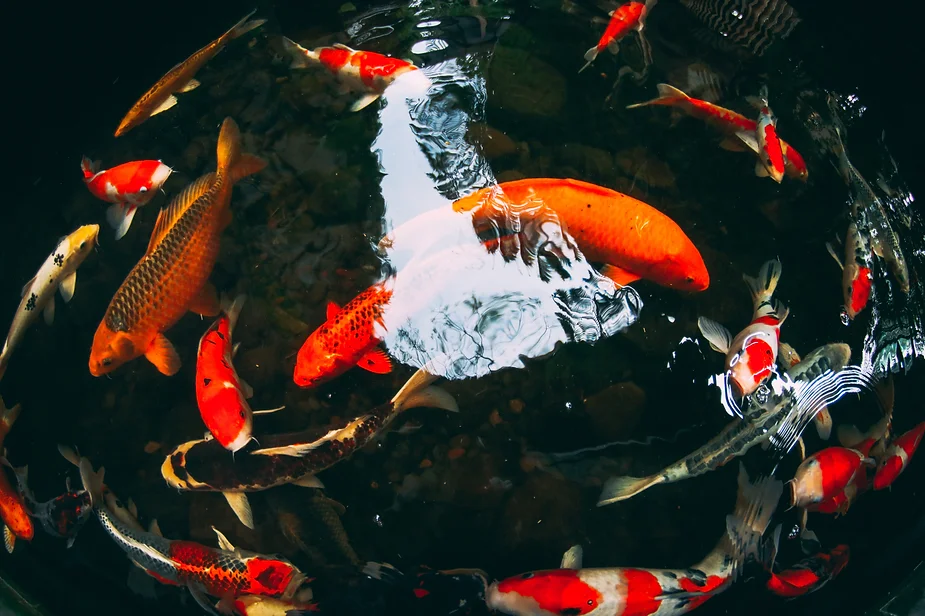The Art of Koi Keeping: Understanding the Behavior of Koi Fish Swimming in Circles
Koi fish are among the most popular ornamental fish around the world. They are not only beautiful to look at, but they also have fascinating behavior that has captivated many koi enthusiasts. One of the most remarkable behaviours of koi fish is their tendency to swim in circles. Many people find this behaviour mesmerizing and wonder what it means. In this article, we will explore the fascinating behaviour of koi fish swimming in circles and what it signifies. We will delve into the history and culture of koi keeping, the different types of koi, and the significance of their circular swimming behaviour. So, let’s dive in and explore the art of koi keeping and the beauty of their circular swimming behaviour
The Importance of Swimming in Circles for Koi Fish
One of the most fascinating behaviors of koi fish is their tendency to swim in circles. This behaviour has been observed in both wild and captive koi, and it has captivated many koi enthusiasts. But what does it mean?
Swimming in circles is a natural behaviour for koi fish, and it serves several purposes. First, it helps them maintain their position in the water. Koi fish are bottom feeders, and they need to stay close to the bottom of the pond to find food. Swimming in circles helps them stay in a specific area without drifting away.
Swimming in circles also helps koi fish regulate their body temperature. The circular motion creates a current that circulates the water, bringing oxygen and nutrients to all areas of the pond. This movement also helps distribute heat evenly throughout the water, keeping the fish warm in colder temperatures.
Finally, swimming in circles is also a way for koi fish to communicate with each other. They use body language, such as tail wagging, head bobbing, and fin flapping, to signal to other fish. Swimming in circles can be a way to establish dominance or courtship, depending on the context.
Understanding the significance of swimming in circles is essential for koi keepers. It can help them monitor the health and behavior of their fish and ensure that they are thriving in their environment.

Factors Affecting Koi Fish Behavior
Several factors can influence the behavior of koi fish. Water temperature, pH level, and water quality are all crucial factors that can affect their health and well-being.
Koi fish are cold-blooded animals, which means that their body temperature is regulated by the temperature of their environment. They are most comfortable in water between 18 and 23.8 degrees Celcius, If the water temperature is too cold or too warm, it can affect their metabolism and immune system, making them vulnerable to disease.
The pH level of the water is also important for koi fish. They prefer water that is slightly alkaline, with a pH between 7.2 and 7.8. If the pH level is too high or too low, it can stress the fish and make them more susceptible to disease.
Water quality is another critical factor for koi fish behaviour. They require clean and well-aerated water to thrive. Poor water quality can lead to stress, disease, and even death. Proper filtration, regular water changes, and monitoring water parameters are essential for maintaining good water quality.
By understanding the factors that affect koi fish behavior, koi keepers can provide their fish with the ideal environment for optimal health and well-being.
Understanding Koi Fish Body Language
Koi fish communicate with each other through body language. Understanding their body language can help koi keepers identify dominant fish, monitor their health, and even breed them successfully.
Tail wagging is one of the most common forms of koi fish body language. They use their tails to communicate with other fish, either to signal aggression or submission. A wagging tail can indicate that a fish is in distress or that it is trying to establish dominance over other fish.
Head bobbing is another form of koi fish body language. They use it to communicate with other fish and to attract mates. A fish that is head-bobbing repeatedly is likely trying to attract a mate or establish dominance over other fish.
Fin flapping is a more aggressive form of koi fish body language. They use it to signal aggression or to establish dominance over other fish. A fish that is flapping its fins rapidly is likely trying to intimidate other fish or defend its territory.
By observing koi fish body language, koi keepers can gain valuable insights into the behaviour and health of their fish.
Benefits of Observing Koi Fish Behaviour
Observing koi fish behavior can provide several benefits for koi keepers. It can help them monitor the health of their fish, identify dominant fish, and even breed them successfully.
Monitoring the behaviour of koi fish can help koi keepers identify signs of stress or disease. If a fish is swimming erratically or showing other abnormal behavior, it may be a sign that something is wrong. By observing their behavior regularly, koi keepers can catch these signs early and take action to prevent potential health issues.
Observing koi fish behavior can also help koi keepers identify dominant fish. Dominant fish are often the largest and most aggressive fish in the pond. They can bully other fish and disrupt the harmony of the pond. By identifying dominant fish, koi keepers can take steps to reduce aggression and maintain a peaceful environment for all fish.
Finally, observing koi fish behaviour can also help koi keepers breed their fish successfully. By understanding the body language and behaviour of their fish, they can identify when they are ready to breed and create the ideal environment for successful breeding.
Common Koi Fish Behaviour Problems
While koi fish are generally peaceful and friendly, they can sometimes exhibit problematic behaviour. Aggression, overcrowding, and stress are all common koi fish behavior problems that koi keepers may encounter.
Aggression is often the result of dominant fish bullying other fish. It can lead to injuries and stress, and even death if left unchecked. Koi keepers can reduce aggression by ensuring that the pond is large enough to accommodate all fish and by providing plenty of hiding places.
Overcrowding is another common koi fish behaviour problem. When too many fish are in a small space, it can lead to stress, disease, and even death. Koi keepers should ensure that their pond is large enough to accommodate all fish comfortably and that they follow the recommended stocking guidelines.
Stress is a common problem for koi fish, and it can be caused by a variety of factors, including poor water quality, overcrowding, and aggressive behavior from other fish. Koi keepers should monitor their fish regularly for signs of stress, such as lethargy, loss of appetite, or abnormal swimming behaviour.
By addressing these common koi fish behaviour problems, koi keepers can ensure that their fish are healthy and thriving.
Techniques for Encouraging Koi Fish to Swim in Circles
Swimming in circles is a natural behaviour for koi fish, but sometimes they may need encouragement to do so. Here are some techniques that koi keepers can use to encourage their fish to swim in circles:
- Feeding: Koi fish are bottom feeders, and they will naturally swim in circles as they search for food. By feeding them in specific areas of the pond, koi keepers can encourage them to swim in circles in those areas.
- Water features: Installing water features, such as fountains or waterfalls, can create a current in the pond that encourages koi fish to swim in circles.
- Pond design: The shape and size of the pond can also influence koi fish behavior. A circular pond can encourage them to swim in circles naturally.
By using these techniques, koi keepers can create an environment that encourages their fish to swim in circles, promoting their health and well-being.
Koi Keeping Tips for Beginners
If you’re new to koi keeping, here are some tips to help you get started:
- Choose the right pond size: Koi fish need plenty of space to thrive. The pond should be at least 4500 litres and have a depth of at least 900 meters.
- Follow feeding guidelines: Koi fish should be fed a balanced diet that is appropriate for their age and size. Overfeeding can lead to health problems and poor water quality.
- Maintain water quality: Regular water changes, proper filtration, and monitoring water parameters are essential for maintaining good water quality.
By following these tips, beginners can ensure that their koi fish thrive in their environment.
Conclusion
Professional koi care services can be a valuable resource for koi owners. These services can provide expert advice and guidance on fish care, as well as professional treatments for health problems or other issues.
Koi fish are fascinating creatures with unique behaviours that have captivated koi enthusiasts for centuries. Understanding their behaviour is crucial for successful koi keeping, and swimming in circles is a natural behaviour that has several benefits for koi fish.
By observing koi fish behaviour, koi keepers can identify signs of stress or disease, identify dominant fish, and even breed their fish successfully. They can also use techniques such as feeding, water features, and pond design to encourage their fish to swim in circles naturally.
Whether you’re a beginner or an experienced koi keeper, understanding koi fish behaviour is essential for maintaining the health and well-being of your fish. With proper care and maintenance, koi fish can live for decades and continue to delight and fascinate koi enthusiasts around the world.

